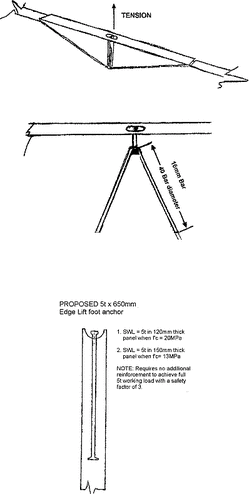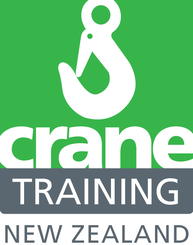|
The following article has been prepared by Peter Thompson of Econoshift Ltd You will be aware from previous publicity that a Code of Practice for lifting precast concrete panels is being developed. However, this Code alone will not be sufficient to prevent accidents as there appears to be a lack of understanding throughout the industry of concrete lifting anchor design principles.Recent incidents have shown that edge lift anchors have been threaded onto panel trimmer reinforcing bars in the tops of panels, rather than used with the anchor bars, as detailed by the anchor suppliers. Trimmer bars and reinforcing bars, running perpendicular to the anchor axis, will have little, if any influence on the pull-out strength of the anchor. When a concrete crack starts to form as the anchor is loaded, perpendicular bars will simply move sideways into the crack area allowing a large shallow cone of concrete to pull out of the top of the panel. Properly bent and placed anchor bars are designed to extend the effective length of edge lift anchors, as it is only by increasing the effective length of these anchors that the safe working load of the anchor can be achieved. It has been suggested to the Code of Practice committee that all lifting anchors requiring special anchoring bars should have those bars supplied with the anchor from the supplier. Another option is the production of special long, single-piece anchors that will provide the full rated working load of the anchor without the necessity for any extra reinforcing. With this latter option crane operators and site supervision personnel can visually determine that the correct anchor has been used and that they are not risking the possibility of an accident on the assumption that reinforcing has been correctly placed. Under the new Code of Practice there will be a requirement that anchors be marked with the anchor length on the head therefore there should be no doubt that the correct anchor has been used. Initial design calculations show for example that a 650mm long anchor would provide a safe working load of 5 tonnes, even when used in the edge of a 120mm thick panel with a concrete strength of f'c=20Mpa. All lifting anchors rely on embedment length to hold them into the concrete panel. So any reinforcing bars must effectively extend the anchors embedment length into the concrete so it can take the required load with a 3 to 1 safety factor. It should also be noted that Hairpin anchors loaded in tension will induce a shear cone in exactly the same manner as a foot anchor when located in the edge. Comments are closed.
|
Archives
June 2023
Categories
All
|
|
|
|
NZBN: 9429042812272
The Crane Association of New Zealand (Inc.) has membership or reciprocal membership with the following associations


 RSS Feed
RSS Feed










